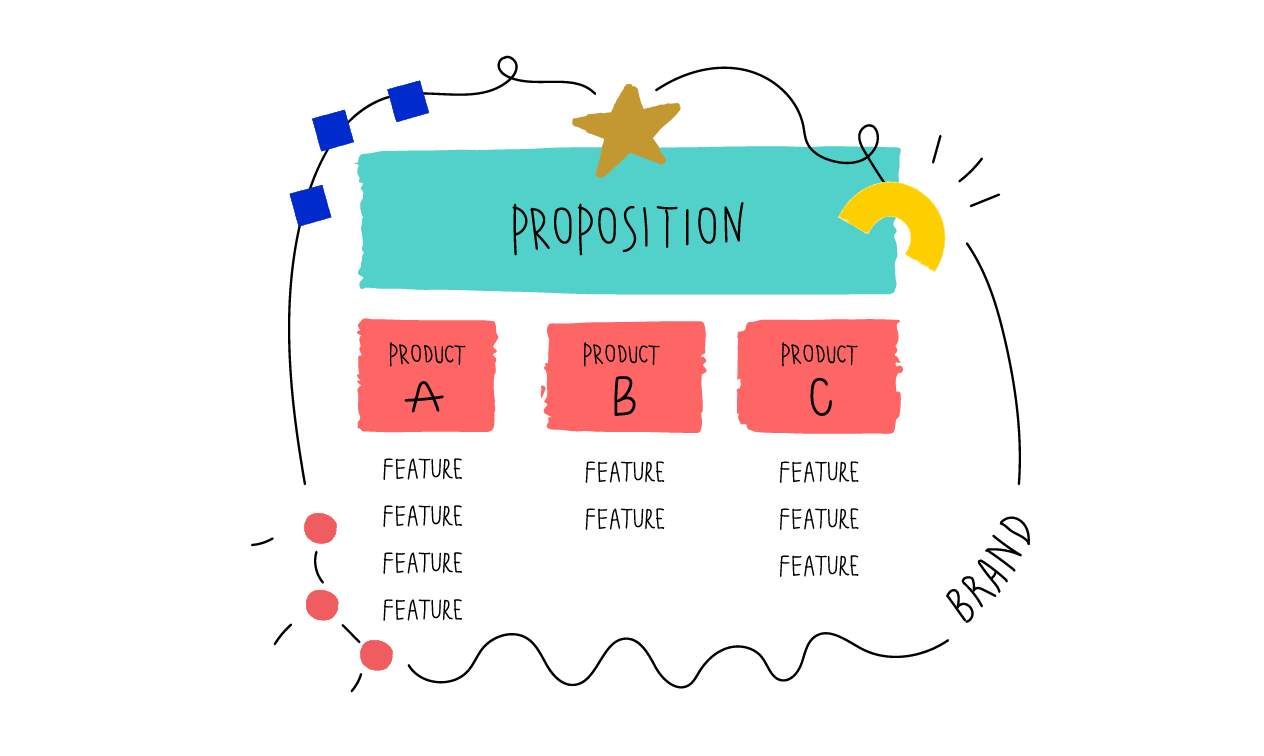
What the prop?! The problem with your proposition
How you can avoid wasting time, effort and money by simply using the word ‘proposition’ properly.
Once a week or so, our team speaks to a new company who are asking for some help with their proposition. It’s a reasonable request. But I’ve noticed they keep coming up with new words to describe what they want our help with.
When someone says “it’s our core proposition that’s broken”, what I’m really hearing is “something isn’t working here but I’m struggling to know exactly what, so let’s just start the whole thing from scratch”.
What a lot of people really need is just a new adjacent product, or perhaps a pivot of their existing product. It might even be the case that a new feature would be enough to completely differentiate them in the market.
More often than not, isolating where the real issue is, that’s the hard work. But the tendency to lead with “the proposition is the problem” is a dangerous one. The result? Working harder than needed, when we’d be simply better off working smarter.
A proper proposition is a very powerful thing, but the word itself seems to be becoming awfully diluted, and thrown around like a game of buzzword bingo.
Here’s how I’d define what constitutes a proposition, versus a feature, a product or a service. Otherwise, I fear this could soon get out of control and it’ll become the most overused word in innovation since… well… innovation.
What is a proposition?
Your proposition should be a summary of your company’s offering, in customer-facing language. It needs to be short and easily understood.
It tends to encapsulate the company’s key differentiator or positioning, and functions as a wrapper around products and services.
You can’t buy a proposition, but you can buy into it
What I mean by this is, customers buy into a proposition but what they receive is one or more of that company’s products (I think you can use the term “product” and “service” in this sense, interchangeably 99% of the time).
Proposition vs product vs feature
Your proposition sits above all of your products and services. It both encompasses and aligns them to your overarching positioning.

Let’s use Citymapper, the digital travel wayfinding tool, as an example.
Their proposition would be something along the lines of:
We help people to travel from A to B. We use technology to make it as easy as possible for people to find their way when travelling.
2 of their products would be:
Citymapper app: A smart phone app that helps you understand all the transport options when getting from A to B. Customers pay for this product with their data.
Citymapper Pass: A payment card, with which you can pay for all your London travel needs. Customers pay for this product through a monthly subscription.
And the features of each product would be:
Citymapper app features:
- Multiple options of travel
- Partnerships with private transport companies
- Travel maps of your city
- Change for the city you are in
Citymapper Pass features:
- Smart card for payments
- Discount prices when bundled
- Apple pay etc
Really, all products are just a way for the proposition to become something that a customer can actually use.
You can save a heap of time, effort and money if you know where a problem lies within your proposition ecosystem, especially when engaging outside help.
Proper propositions allow you to work smart, not hard. And in turn, create more valuable things.

frog, part of Capgemini Invent is a global design and innovation firm. We transform businesses at scale by creating systems of brand, product and service that deliver a distinctly better experience. We strive to touch hearts and move markets. Our passion is to transform ideas into realities. We partner with clients to anticipate the future, evolve organizations and advance the human experience.
We respect your privacy
We use Cookies to improve your experience on our website. They help us to improve site performance, present you relevant advertising and enable you to share content in social media. You may accept all Cookies, or choose to manage them individually. You can change your settings at any time by clicking Cookie Settings available in the footer of every page. For more information related to the Cookies, please visit our Cookie Policy.